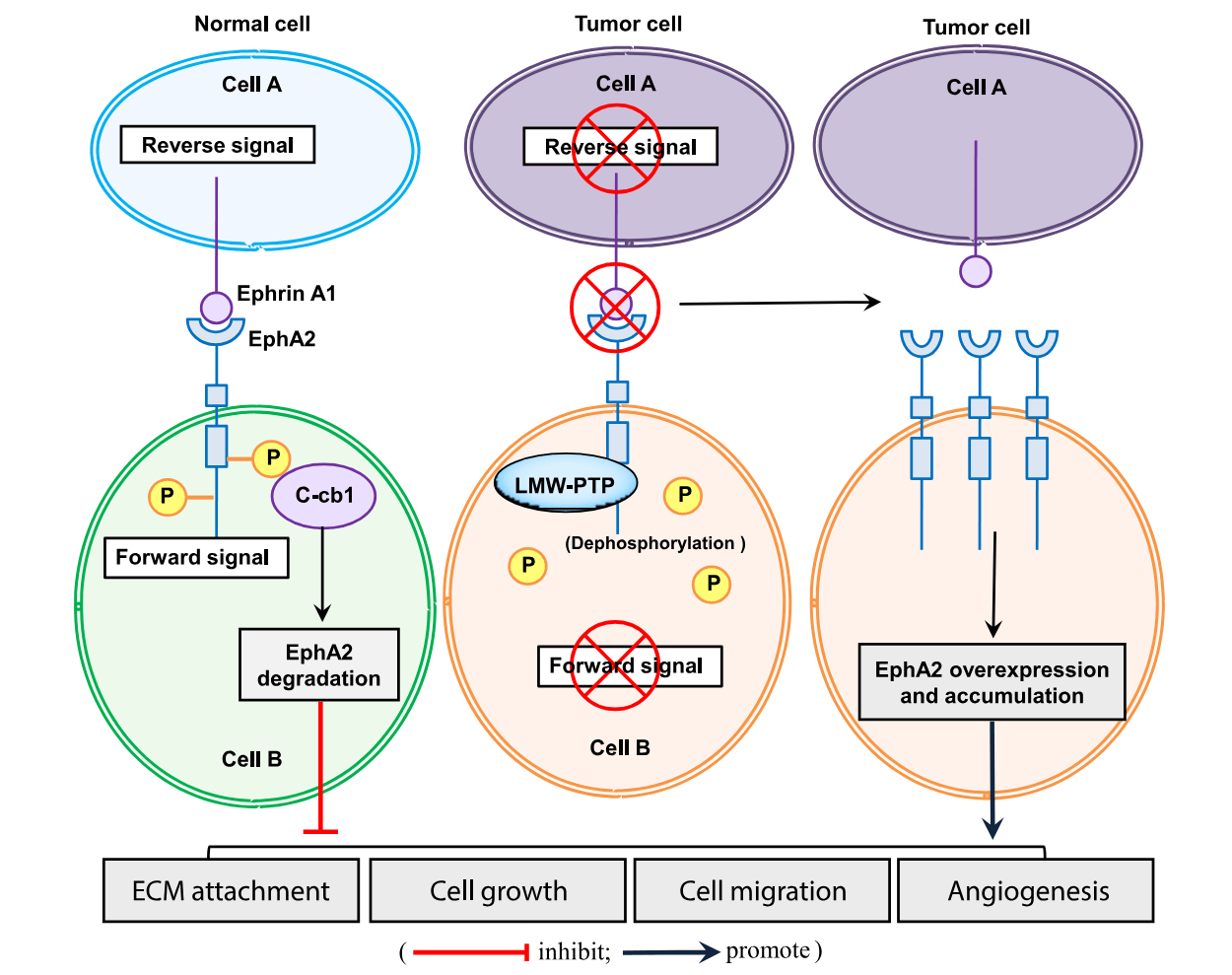Creative Biolabs is a well-known antibody service provider and is now focused on the field of specific in vitro diagnostic (IVD) antibodies for the diagnosis of a diversity of diseases. We offer custom-specific IVD antibody development services targeting different markers of glioma to aid in the development of immunodiagnostic kits. Notably, ephrin type-A receptor 2 (EphA2) is thought of an attractive biomarker of glioma.
Introduction of EphA2
The Eph receptors (Ephs, after erythropoietin-producing human hepatocellular receptors) contain the largest family of tyrosine kinase receptors (TKRs), with 16 known members in many species, 14 of which are found in mammals. These 14 members of receptors and their membrane-anchored ligands named ephrins play important roles in an array of developmental, physiological, and pathological processes. Both of the receptors and ligands are divided into two subfamilies, A and B classes, based on sequence homology of the extracellular domain.
 Fig.1 Targeting EphA2 in cancer.1
Fig.1 Targeting EphA2 in cancer.1
EphA2, also known as Eph receptor A2, is a member of the EphA receptors that primarily bind to GPI-anchored ephrinA ligands, including ephrins A1, 2, 3, 4, and 5. This receptor is a transmembrane glycoprotein composed of 976 amino acid residues, with a molecular mass of 130 kDa. Aberrance of Eph/ephrin systems has been documented in a variety of human cancers. In particular, EphA2 is the most frequently affected Eph receptors in human advanced cancers. Moreover, EphA2 is implicated in cell proliferation, cell migration and epithelial-to-mesenchymal transition (EMT).
EphA2 Marker for Glioma
Glioma is the most common and the most aggressive malignant primary brain tumor in adults, resulting in large mortality around the world every year. The malignancy of glioma is featured by rapid cell growth, high invasion, and poor survival. EphA2, a membrane-bound tyrosine kinase, serves as an oncogene involved in promoting the formation and development of many different malignancies. Emerging evidence has demonstrated increased EphA2 level in a number of cancers, such as melanoma, breast carcinoma, prostate carcinoma, and oral squamous cell carcinoma, and its overexpression is often related to the late stage malignant progression and poor prognosis.
Increasing evidence suggests that EphA2 expression may be causally associated with glioma. To evaluate the role of EphA2 in human glioma, scientists examined the expression level in 20 cases of normal brain tissue and glioma tissue specimens. In Fig.2, EphA2 was up-regulated in glioma tissues in comparison to the normal brain tissues. Also, the immunohistochemistry (IHC) staining of glioma specimens showed overexpression of EphA2.
IVD Antibody Development Service for EphA2 Marker
Although EphA2 is poorly expressed in the normal brain, it is overexpressed in high-grade glioma and is associated with worse prognosis, making it a potential biomarker for disease diagnosis and prognosis. At Creative Biolabs, we’re able to provide customized antibody development services for diagnostic use. With our versatile IVD platform, Creative Biolabs is proud to develop novel EphA2-specific (paired) antibodies from scratch to commercial IVD kit (we can also start with provided antibody candidates).
As a top leader in the field of antibody development, Creative Biolabs has perfectly achieved numerous challenging tasks for worldwide clients based on years of experience and powerful platforms. If you’re interested in our services, please contact us for more information or directly send us an inquiry.
Reference
- Xiao, Ta, et al. "Targeting EphA2 in cancer." Journal of hematology & oncology 13 (2020): 1-17. Distributed under Open Access license CC BY 4.0, without modification.
For Research Use Only.

